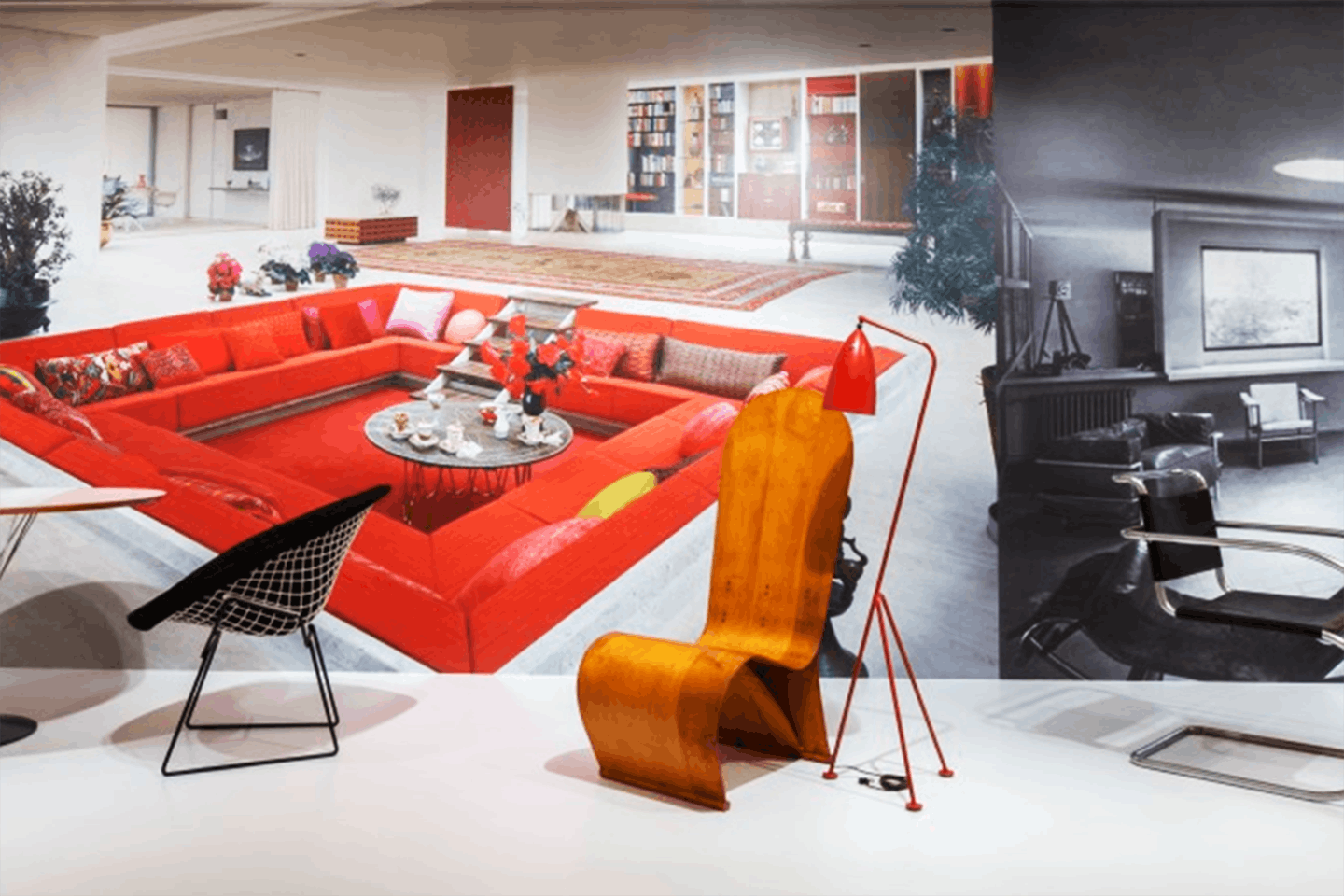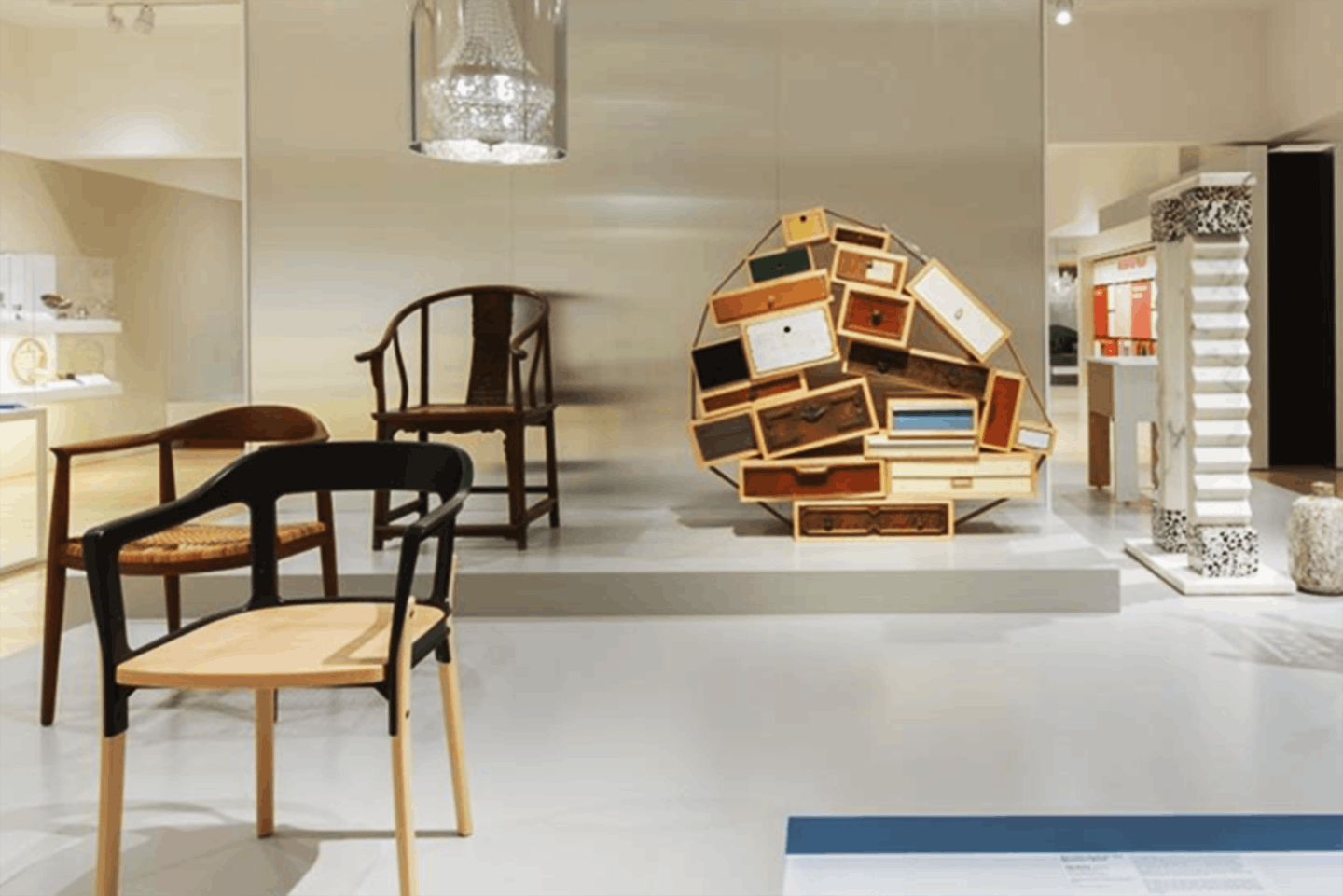A curator must wear many hats, according to Shelley Selim, MA History of Design and Curatorial Studies ’13. In Selim’s case, that entails not just scholarly research but also close collaboration with colleagues responsible for the many behind-the-scenes
tasks it takes to create exhibitions: “It's a team effort that involves caring for and displaying objects, creating signage, shipping pieces, handling image rights, registering objects, and overseeing exhibition products.”
 Selim oversaw the refresh of the Indianapolis Museum of Art at Newfields’ Design Gallery, updated to make it more visitor-friendly. The entryway features a design timeline, images of period interiors, and masterworks by midcentury designers from the collection.
Selim oversaw the refresh of the Indianapolis Museum of Art at Newfields’ Design Gallery, updated to make it more visitor-friendly. The entryway features a design timeline, images of period interiors, and masterworks by midcentury designers from the collection.
Selim puts her skills to work daily in her newly created position as the Mort Harris Curator of Automotive, Industrial, and Decorative Design at the Detroit Institute of Arts, covering American and European art and design. She is especially excited by
the opportunity to build the museum's collection of automotive design renderings and showcase its connection to Detroit, home to GM, Ford, and Chrysler.
Selim, who claims she is not a “gearhead,” has discovered a new fascination with midcentury automotive design through an exploration of renderings from the time. “The 1930s to the 1970s was a period of robust design experimentation, especially in America,”
says Selim, citing the “great tailfins” and bold use of color and textiles characteristic of the era. She plans to reveal to museum visitors the many parallels between automotive design and other forms of industrial design and fine art of the period.
 A 1959 illustration for an electric car, from the Detroit Institute of Arts, where Selim recently began working as a curator.
A 1959 illustration for an electric car, from the Detroit Institute of Arts, where Selim recently began working as a curator.Selim honed her curatorial skills at Parsons, which offered her the opportunity to study at Cooper Hewitt, Smithsonian Design Museum. “I had such a magical time at Parsons, being surrounded by people with diverse perspectives and areas of expertise,”
she says. A curatorial fellowship at Cranbrook Art Museum in Bloomfield Hills, Michigan, situated her in “the hotbed of midcentury design and crafts” and prepared her for her subsequent role as curator of Design and Decorative Arts at the Indianapolis
Museum of Art.
 Highlights from Selim’s design survey exhibition at the Indianapolis Museum of Art at Newfields include historical and contemporary chair designs, Tejo Remy’s You Can’t Lay Down Your Memories chest of drawers, works by Memphis, and a piece by Midwestern
ceramicist Claude Conover.
Highlights from Selim’s design survey exhibition at the Indianapolis Museum of Art at Newfields include historical and contemporary chair designs, Tejo Remy’s You Can’t Lay Down Your Memories chest of drawers, works by Memphis, and a piece by Midwestern
ceramicist Claude Conover.Highlights from Selim’s design survey exhibition at the Indianapolis Museum of Art at Newfields include historical and contemporary chair designs, Tejo Remy’s You Can’t Lay Down Your Memories chest of drawers, works by Memphis, and a piece by Midwestern
ceramicist Claude Conover.
Scholarship and design knowledge are crucial, but Selim believes “what’s most important is how a curator treats people”—from colleagues to artists to philanthropic organizations to visitors, including schoolchildren. “I want to be part of a museum that
operates like a town square,” she says, “where you’re welcome and free to roam.”
@shelleyselim